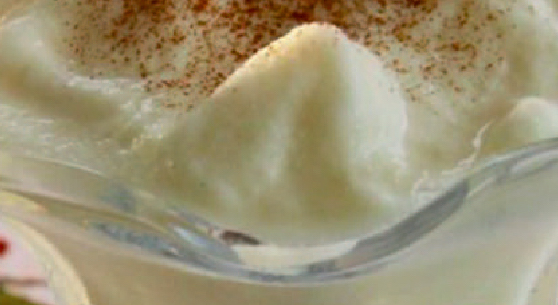Photos by Libby Rogers

Brett Hall was traveling, selling yearbooks to Native American high schools in Arizona when the highway ended. He called his contact, who told him to follow the blacktop. When the blacktop ended, he called again and was told to follow the dirt road. When that ended, he saw a sign indicating he was in Utah. “You are not in Utah,” his contact said. “You are in Navajo Country. Follow the ruts through the field.” After waiting for a herd of sheep, Brett continued on, where he met some “amazing people.” It was the most remote place Brett had ever encountered, and the experience made a lasting impression.
A kindergarten teacher first noted that Brett, the son of a “quintessential Kansas wheat farmer,” had artistic talent, and he pursued art throughout school. He got sidetracked for several decades with a career in advertising and marketing, but when he finally began drawing again, he also taught himself to paint. When he realized he needed to focus on one type of art, he remembered the Native Americans he had visited. Brett is now the president of the Conroe Art League and still works in marketing, but spends much of his free time advocating for Native Americans through portraiture.
When did you decide to become an artist?
I can’t really remember when I decided. I always knew I would be. The only classes I remember in high school were art and journalism. I did the cartoon for the student newspaper. I left high school two weeks early, leaving a self-addressed, stamped envelope for my diploma and headed for Denver to Colorado Institute of Art, a commercial art school. I had picked up counsel somewhere: “If you are going to be an artist, you’ve got to eat.” I did a two-year course in commercial art.
What happened next?
At the end of the course, an art school friend and I were going to backpack through Europe and stay in youth hostels—a big adventure for a 20-year-old kid. At the last minute, he dropped out. I look back now and wonder, “What was I thinking?” but at the time I didn’t question it. I took off for Europe. I was living on $160 a month—a Social Security check from my father, who passed away when I was in fourth grade. I had a rail pass, hopping trains from Morocco to Holland and all points in between.
At some point, I was in a train station and someone said, “You should go meet Salvador Dali. He’s either here in Paris at the Hotel Meurice, at the St. Regis in New York, or at his home near Figueres, Spain.” My idol was Salvador Dali. I went to the Hotel Meurice and they said, “He’s at home.” I took a train, then a bus, where I was sandwiched between some rather large women holding live chickens by their feet. I put my backpack in a locker and hiked the last five miles. I came to a bizarre cove where all the rocks looked like the rocks in his paintings. The butler said to come back that evening. He said, “Dali will talk to any art student that comes to see him.” When I came back, Dali asked, “Do you speak French?” I said no. He said, “Talk to Madame Gala. Her English is better.” I was shown upstairs to the study, thinking this was truly surreal. Madame Gala swept in and said, “Where are you from?” I told her, “Denver.” She asked, “What are you doing here?” I said, “I’ve come to see the great museums of Europe.” She said, “Go back to Denver, look at one painting, and go walk in the snow. That would be better.” This is one of two things I have held at my core.
Madame Gala walked out of the room, and suddenly Dali walked in and said, “Where’s your piece?” I said, “What do you mean?” He said, “It’s my practice that I trade art pieces with any student who comes to see me.” I had put everything in my backpack at the bus station. He said, “Too bad; thank you for coming.” I had to hike five miles back. I found a hostel and stared at the ceiling all night in disbelief that this had even happened.

And then you became a commercial artist?
I went to work for a company in Denver that made illustrated checks. I became the art director. Then I decided that I didn’t want to get the copy and the concept from the marketing director, so I became marketing director. It wasn’t selling, so I became the salesman. After about 40 years in advertising, I woke up about five years ago and realized I hadn’t truly drawn anything in probably 15 years.

As you are not Native American, why do you concentrate on Native American portraiture?
When I did my first art show, the curator came by and said, “It looks like you could do good stuff, but you need to focus, because you are all over the map.” I took that to heart and thought about what one subject might inspire and fascinate me. I had been selling yearbooks to Native American schools. I made some amazing trips to the most off-the-grid places you can imagine. I decided that’s what I wanted to focus on. As I began to study and learn, I realized it was a bigger story—the story of indigenous people worldwide who are being displaced by progress. I read somewhere that it’s a three-legged stool of environment, social justice, and indigenous peoples. The way people treat the earth is the way they will treat people—as disposable. I kind of wrapped my head around being an artist activist.

Can you elaborate?
I have a couple of mantras that I apply. One is that “art should disturb the comfortable and comfort the disturbed.” I would like to think my portraits might disturb those who would like to forget and comfort those who remember. The other is “to give a voice to those who have been silenced, to give eyes to those who don’t see, and to give a heart to those who just don’t care.” So, for the last four years my wife Bev and I have done art shows around the country. When we go, Bev walks down about five tents on either side of us. She says, “I want to apologize in advance. My husband has a loud voice. He likes to tell the same stories over and over again. By the end of the day, you will know them all by heart.”
How has your art been received?
I was very nervous when I went to shows in the southwest, but the natives were very positive and approved. It gives me a reason to get up at four in the morning to paint before my “day job” starts. As the portraits develop, they speak their names to me, like Betrayed, Forgotten, Resilience. The eyes tell me what the title is. The eyes are what really grab people. Each one is looking at you. I think the best compliments are when people say, “Did they pose for you?” Bringing them back to life from 150 years ago is rewarding.
Please describe your technique.
I want to be historically accurate, so I research photos in the Library of Congress. I might take the facial features of one person and the dress of another, but always within the same tribe and era. I learn with every portrait, because I research it thoroughly. Most people start with the background, but I start with the eyes. I found my palette. It’s four colors: light yellow, medium yellow, medium brown and dark brown. That has become the signature look. People recognize and remember it. It gives a suggestion of sepia antiquity.

How did you meet Bev?
A fellow art school student and I lived in downtown Denver in tiny efficiency apartments. On the weekends, we would go out to his cousin’s house out in the suburbs. One day Bev had come to visit her from Nebraska. Bev leaned over to her when I walked in and said, “I am going to marry him.” That was in May, and we were married in October. It will be 45 years in October. We have twin sons who are 36 years old, Gram and Shea. They are identical, but total opposites. Shea is a master technician at Republic Harley Davidson. He has the tatts and the beard and shaved head. Gram is khakied up, clean cut and corporate, climbing the ladder at Subsea 7. I see myself in both of them. Somewhere along the way, we ended up with five grandchildren.
When did you move to Conroe?
We got transferred to the Cinco Ranch area from California when the twins were in fourth grade. Both our parents were in Kansas, and we visited on a regular basis. We drove through Conroe, but never stopped. About five years ago, we rented a timeshare on the lake. We were amazed. We had always been flying by. There were trees—big trees! And the lake. One day we stumbled onto downtown. They have a gallery! There’s the Crighton and another theater. We were flabbergasted.
And now you are the president of the Conroe Art League.
I have a day job in marketing, so being president of the CAL was total insanity to take on. It would actually be impossible without Bev. She serves as vice president. May will make one year serving in those capacities. In that time, we have grown from 200 members to 320. We just had our 12 x 12 annual auction, raising over $8,000. It all goes to high school students who are going on with their art studies. There is some amazing talent here. I think every child is born an artist. They sing before they can talk. They dance before they can walk, and they scribble with crayons before they can write. Somewhere along the way, the world beats it out of them. We want to support the ones who stick with it.

Have you won awards?
I won an award of excellence from the International Society of Acrylic Painters, and won the award for the best portrait at The Woodlands Art League. I was just accepted into a show in Irving, Texas. There were 720 entries, and they narrowed it to 75. But no matter what I do as an artist, no matter what award, I have already reached my zenith. A couple of shows ago in New Mexico, an elderly Native American man came in a wheelchair wearing leather gloves. He stopped and pointed at a portrait I had done of a young girl. I asked him, “Do you like that?” (I had learned that when they don’t have anything to say, don’t fill it with idle chitchat). After a while, he took off his gloves to wipe his eyes; he was crying. He finally told me she reminded him of a girl he knew in Indian boarding school when the government came and forcibly took the children from their parents. They cut their hair and burned their clothes. They beat them if they spoke their native language. The government motto was “kill the Indian to save the child.” He had experienced that. To think paint on a canvas could evoke that emotion was pretty high praise. It was humbling.
For more information visit brettghall.com.



